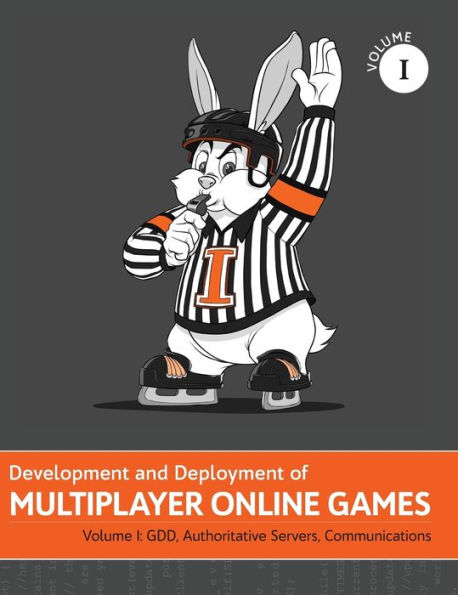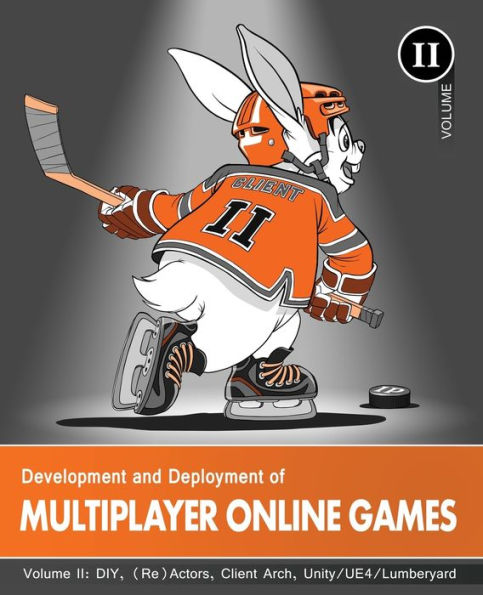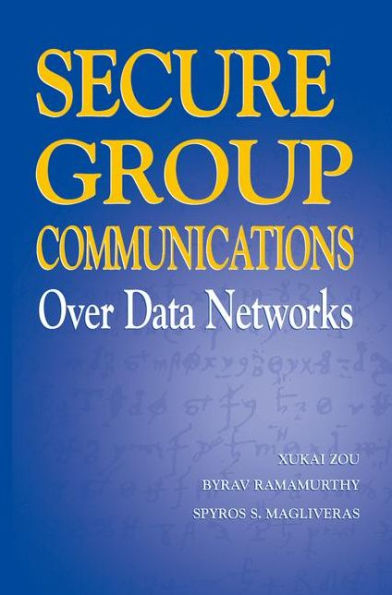Home
Development and Deployment of Multiplayer Online Games, Vol. I: GDD, Authoritative Servers, Communications
Barnes and Noble
Loading Inventory...
Development and Deployment of Multiplayer Online Games, Vol. I: GDD, Authoritative Servers, Communications in Bloomington, MN
Current price: $39.95


Development and Deployment of Multiplayer Online Games, Vol. I: GDD, Authoritative Servers, Communications in Bloomington, MN
Current price: $39.95
Loading Inventory...
Size: OS
Trying to develop your own multiplayer online game can be overwhelming, especially as information on multiplayer specifics is
very
scarce. The nine-volume
Development and Deployment of Multiplayer Games
series is an attempt to
summarize a body of knowledge that is known in the industry, but is rarely published, let alone published together
.
The series is highly praised by prominent representatives of the multiplayer gamedev industry
. An “Early Praise” page within the book lists several testimonials by people from billion-dollar and/or AAA companies with job titles ranging from
Managing Director
and
CTO
to
Backend Technical Director
Principal Software Engineer
Genres: From Social Games to MMOFPS, with Stock Exchanges In Between
Development and Deployment of Multiplayer Online Games
aims to cover pretty much all the MOG genres - ranging from social games to MMORPGs and MMOFPS. While there are certainly differences between the genres, around 80% of the discussed concepts apply across the board.
Level: Intermediate+
. This series is not trying to teach very basics of the programming (and is not a book to copy-paste your MOG from). Rather, it is intended for those intermediate developers who want to progress into senior ones, and all the way up to CTOs and architects.
In particular, there is no explanation of what event-driven programming is about, what the difference is between optimistic locking and pessimistic locking, why do you need a source control system, and so on. Instead, there will be discussions on
how the concept of futures
fits into event-driven programming, when the use of optimistic locking
makes sense for games
, and how to use source control
in the presence of unmergeable files
This Volume: Vol. I
Vol. I starts
Part ARCH(itecture)
, and includes three Chapters. Chapter 1 discusses Game Design Document (GDD) - mostly concentrating on its multiplayer specifics of GDDs. Chapter 2 explores the all-important aspects of cheating - which is virtually non-existent in single-player games and games between friends, but plays an enormous role in multiplayer games; the resulting analysis leads to Authoritative Server architectures (note that discussion on
implementing
anti-cheating measures is much longer than it is possible to fit into Vol. I, and will take the whole Vol. VIII). The largest chapter of Vol. I, Chapter 3, is dedicated to typical multiplayer communication flows. Along the course of this discussion, it will cover lots of different topics, including such different things as Client-Side Prediction, Low-Latency Compressible State Sync, Lag Compensation and its dangers, and Inter-DB Async Transfer with Transactional Integrity
very
scarce. The nine-volume
Development and Deployment of Multiplayer Games
series is an attempt to
summarize a body of knowledge that is known in the industry, but is rarely published, let alone published together
.
The series is highly praised by prominent representatives of the multiplayer gamedev industry
. An “Early Praise” page within the book lists several testimonials by people from billion-dollar and/or AAA companies with job titles ranging from
Managing Director
and
CTO
to
Backend Technical Director
Principal Software Engineer
Genres: From Social Games to MMOFPS, with Stock Exchanges In Between
Development and Deployment of Multiplayer Online Games
aims to cover pretty much all the MOG genres - ranging from social games to MMORPGs and MMOFPS. While there are certainly differences between the genres, around 80% of the discussed concepts apply across the board.
Level: Intermediate+
. This series is not trying to teach very basics of the programming (and is not a book to copy-paste your MOG from). Rather, it is intended for those intermediate developers who want to progress into senior ones, and all the way up to CTOs and architects.
In particular, there is no explanation of what event-driven programming is about, what the difference is between optimistic locking and pessimistic locking, why do you need a source control system, and so on. Instead, there will be discussions on
how the concept of futures
fits into event-driven programming, when the use of optimistic locking
makes sense for games
, and how to use source control
in the presence of unmergeable files
This Volume: Vol. I
Vol. I starts
Part ARCH(itecture)
, and includes three Chapters. Chapter 1 discusses Game Design Document (GDD) - mostly concentrating on its multiplayer specifics of GDDs. Chapter 2 explores the all-important aspects of cheating - which is virtually non-existent in single-player games and games between friends, but plays an enormous role in multiplayer games; the resulting analysis leads to Authoritative Server architectures (note that discussion on
implementing
anti-cheating measures is much longer than it is possible to fit into Vol. I, and will take the whole Vol. VIII). The largest chapter of Vol. I, Chapter 3, is dedicated to typical multiplayer communication flows. Along the course of this discussion, it will cover lots of different topics, including such different things as Client-Side Prediction, Low-Latency Compressible State Sync, Lag Compensation and its dangers, and Inter-DB Async Transfer with Transactional Integrity
Trying to develop your own multiplayer online game can be overwhelming, especially as information on multiplayer specifics is
very
scarce. The nine-volume
Development and Deployment of Multiplayer Games
series is an attempt to
summarize a body of knowledge that is known in the industry, but is rarely published, let alone published together
.
The series is highly praised by prominent representatives of the multiplayer gamedev industry
. An “Early Praise” page within the book lists several testimonials by people from billion-dollar and/or AAA companies with job titles ranging from
Managing Director
and
CTO
to
Backend Technical Director
Principal Software Engineer
Genres: From Social Games to MMOFPS, with Stock Exchanges In Between
Development and Deployment of Multiplayer Online Games
aims to cover pretty much all the MOG genres - ranging from social games to MMORPGs and MMOFPS. While there are certainly differences between the genres, around 80% of the discussed concepts apply across the board.
Level: Intermediate+
. This series is not trying to teach very basics of the programming (and is not a book to copy-paste your MOG from). Rather, it is intended for those intermediate developers who want to progress into senior ones, and all the way up to CTOs and architects.
In particular, there is no explanation of what event-driven programming is about, what the difference is between optimistic locking and pessimistic locking, why do you need a source control system, and so on. Instead, there will be discussions on
how the concept of futures
fits into event-driven programming, when the use of optimistic locking
makes sense for games
, and how to use source control
in the presence of unmergeable files
This Volume: Vol. I
Vol. I starts
Part ARCH(itecture)
, and includes three Chapters. Chapter 1 discusses Game Design Document (GDD) - mostly concentrating on its multiplayer specifics of GDDs. Chapter 2 explores the all-important aspects of cheating - which is virtually non-existent in single-player games and games between friends, but plays an enormous role in multiplayer games; the resulting analysis leads to Authoritative Server architectures (note that discussion on
implementing
anti-cheating measures is much longer than it is possible to fit into Vol. I, and will take the whole Vol. VIII). The largest chapter of Vol. I, Chapter 3, is dedicated to typical multiplayer communication flows. Along the course of this discussion, it will cover lots of different topics, including such different things as Client-Side Prediction, Low-Latency Compressible State Sync, Lag Compensation and its dangers, and Inter-DB Async Transfer with Transactional Integrity
very
scarce. The nine-volume
Development and Deployment of Multiplayer Games
series is an attempt to
summarize a body of knowledge that is known in the industry, but is rarely published, let alone published together
.
The series is highly praised by prominent representatives of the multiplayer gamedev industry
. An “Early Praise” page within the book lists several testimonials by people from billion-dollar and/or AAA companies with job titles ranging from
Managing Director
and
CTO
to
Backend Technical Director
Principal Software Engineer
Genres: From Social Games to MMOFPS, with Stock Exchanges In Between
Development and Deployment of Multiplayer Online Games
aims to cover pretty much all the MOG genres - ranging from social games to MMORPGs and MMOFPS. While there are certainly differences between the genres, around 80% of the discussed concepts apply across the board.
Level: Intermediate+
. This series is not trying to teach very basics of the programming (and is not a book to copy-paste your MOG from). Rather, it is intended for those intermediate developers who want to progress into senior ones, and all the way up to CTOs and architects.
In particular, there is no explanation of what event-driven programming is about, what the difference is between optimistic locking and pessimistic locking, why do you need a source control system, and so on. Instead, there will be discussions on
how the concept of futures
fits into event-driven programming, when the use of optimistic locking
makes sense for games
, and how to use source control
in the presence of unmergeable files
This Volume: Vol. I
Vol. I starts
Part ARCH(itecture)
, and includes three Chapters. Chapter 1 discusses Game Design Document (GDD) - mostly concentrating on its multiplayer specifics of GDDs. Chapter 2 explores the all-important aspects of cheating - which is virtually non-existent in single-player games and games between friends, but plays an enormous role in multiplayer games; the resulting analysis leads to Authoritative Server architectures (note that discussion on
implementing
anti-cheating measures is much longer than it is possible to fit into Vol. I, and will take the whole Vol. VIII). The largest chapter of Vol. I, Chapter 3, is dedicated to typical multiplayer communication flows. Along the course of this discussion, it will cover lots of different topics, including such different things as Client-Side Prediction, Low-Latency Compressible State Sync, Lag Compensation and its dangers, and Inter-DB Async Transfer with Transactional Integrity










